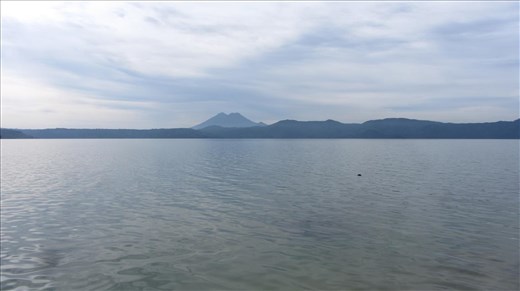Just to the south-east of San Salvador is the massive crater lake of Ilopango. It is around 8km across and 10km wide with a depth of around 235m. It is formed by the collection of rainwater and is the crater created when the volcano Ilopango erupted back in around 536AD. Scientists have recently attributed this eruption with the drop in global temperatures of around 2C which resulted in the poor harvests of the time which had severely detremental effects on the roman and mayan empires as well as a major Chinese dynasty. This volcano is still active and has many upwellings deep underwater. On one dive at a site called the 'Caldera del Diablo' (Devils Cauldron) there are many hot vents on a volcanic upwelling. Around these vents, where you can warm your hands, grow fresh water sponges.

View across Lago Ilopango to 3 distant volcanoes.
During this time of year there is a lot of algae growing in the surface waters which makes the lake very green, but once you get below around 15m the visibility greatly improves as you dip below the thermocline. Surface temperature is around 28C which encourages the algae to grow but this stops when the temp drops by 3-4C below the thermocline. In the summer months when it is cold in the north of the continent and the wind blows from that direction the lake temperature drops a few degrees and the algae growth stops and the visibility goes to around 15m from around 1m at present, if it has been raining at night.
